| Segment | Transport mode | Time | Cost | Notes |
|---|---|---|---|---|
| Vilcabamba - Zumba | Bus | 6 hours | $6.5pp | Overnighted in Zumba |
| Zumba - La Balsa | Ranchera | 1.5 hours | $1.75pp | |
| La Balsa - San Ignacio | Squished shared taxi | 1.5 hours | S/12pp | |
| San Ignacio - Jaen | Minibus | 3+ hours | S/12pp | Overnighted in Jaen |
| Jaen between terminals | Moto rickshaw | 10 minutes | S/1.5 | Road work |
| Jaen - Bagua Grande | Shared taxi | 1.25 hours | S/9pp | Road work |
| Bagua Grande - Chachapoyas | Shared taxi | 3 hours | S/22pp | Road work |
As usual, things turned out to be as easy as pie, except
The road on Ecuador side is worse Peru. In fact, at the rate that we suffered from road construction work delays in Peru, in the very near future it will be full fledged highway.
The ranchera ride was an experience. It was physically demanding. We had to work hard to stay on the bench, not fall to the floor or out of the truck, which was really regretful as there was no chance of photographing morning mist over the mountains. On the graveled switchbacks the ranchera was what I remember a roller-coaster to be minus the upside down part. There was so much jostling that our netbook did not turn on that evening.
Coming from Ecuador, the transportation cost in Peru seemed very high. We kept suspecting that we were quoted Gringo prices, but each time we watched fellow passengers pay exactly the same amount.
We were told Jaen was a dangerous town and spent endless time researching and contemplating whether to overnight there. It turned out to be a perfectly safe and friendly place. Our only regret was not to have taken a cooler and air-conditioned room. There were more moto rickshaws than pedestrians in town which may freak some people out.
The church in Zumba.
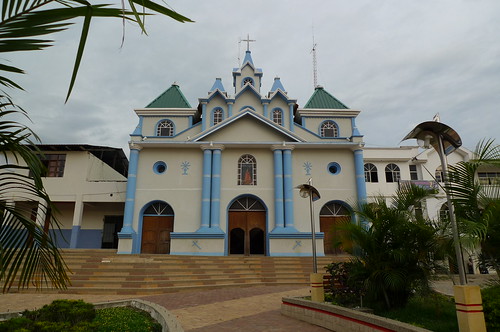
The Zumba to La Balsa ranchera as it was loading.
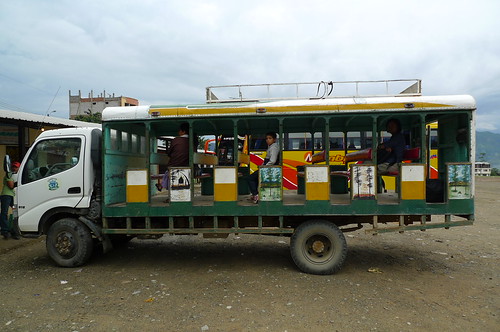
The main Plaza in Jaen, Peru as seen from our hotel room.

Unedited video of part of the moto-taxi ride from our hotel to the Bagua Grande colectivo stand.
Stopped due to road work on the road from Jaen to Bagua Grande.
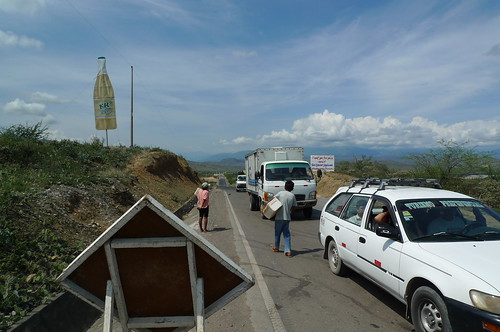
Stopped due to road work on the road from Bagua Grande to Chachapoyas.
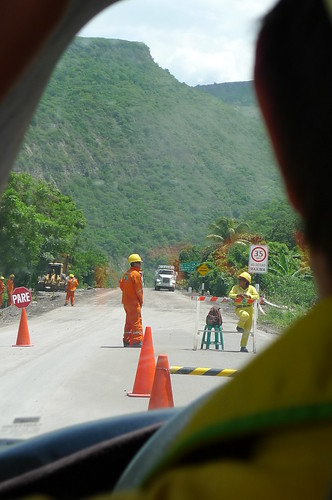
And finally installed in a big hotel room in Hostal Amazonas in Chachapoyas.
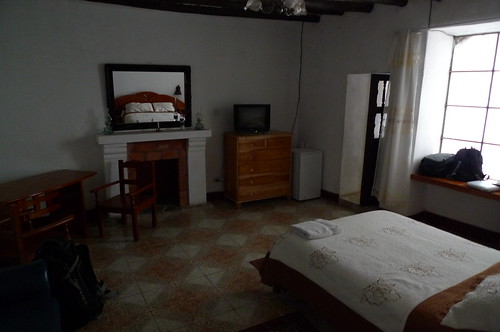
Love the moto-rickshaw video. Called Jeanne to watch it and she remarked, "It looks like India."
ReplyDeleteI so much love your blog. I love the narratives and I love the photos. I haven't checked it in a week or so. I just caught up. I was glad to read that the coup in Ecuador caused no problems for you while you were in Ecuador. Visiting a country first hand certainly gives you better insight to interpret what we read in the newspapers and magazines.
ReplyDeleteI don't think you've posted anything about the water. Leela's friend Megan is in Africa. She boils all her water. BUT she ate some veggies that were washed but not cooked, she got really ill and had to go to the hospital for three days. The doctor told her that the water has fecal matter so it MUST be boiled. Is the water drinkable in all the countries that you're visiting?
OH...and I LOVE the new hat!
Susan
Susan, Thanks for the question on drinking water. It inspired a new blog post: http://meckleyearth.blogspot.com/2010/12/drinking-water-on-road.html
ReplyDelete